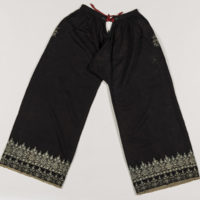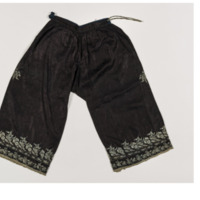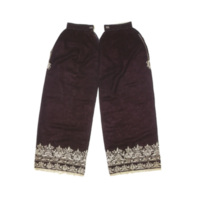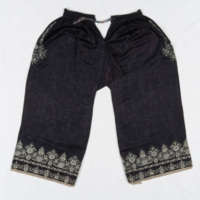Headscarf - Tunkulu
Text
A scarf, a Tangkulu, carried by men. The fabric is made of woven reddish brown cotton. The pattern consists of white eight-pointed star surrounded by "branches" or "windows". These represent crocodile motives. The basic components of the crocodile motif are the horizontal lines and the engaging diamond shapes. The figures are made with the so-called Plangi technique, ligating portions of the fabric. These sections remained unstained. The edges are decorated with white half circles. At the four corners are white bead wires attached, which ends having red beads. The four corners of the cloth are also decorated with sewn sequins.
The cloth should only be worn by men who had proven themselves during combat operations. This meant that there had to be a slain enemy. As there were slain more enemies the red color of the cloth was darker. The fabric also includes decorations such as bushes horse or goat hair or bead work to the points on the forehead layers.
Also see Lynda Angelica Reyes, "The textiles of Southern Philippines" (p. 45):. "The crocodile was Regarded with awe and veneration as Its image was deeply impressed on the minds of the people. a particular scheme was created in How many followers the most essential aspects of the reptile was discernible. This motif in Bagobo design was found almost in every item Carried or worn on the body. it was probable That the motif was Considered a charm and for it to be efficacious, it had to be situated Closest to the body. Clothing was the Closest to human skin, Hence, the motif was incorporated in most Bagobo-clothing. "
Share this



